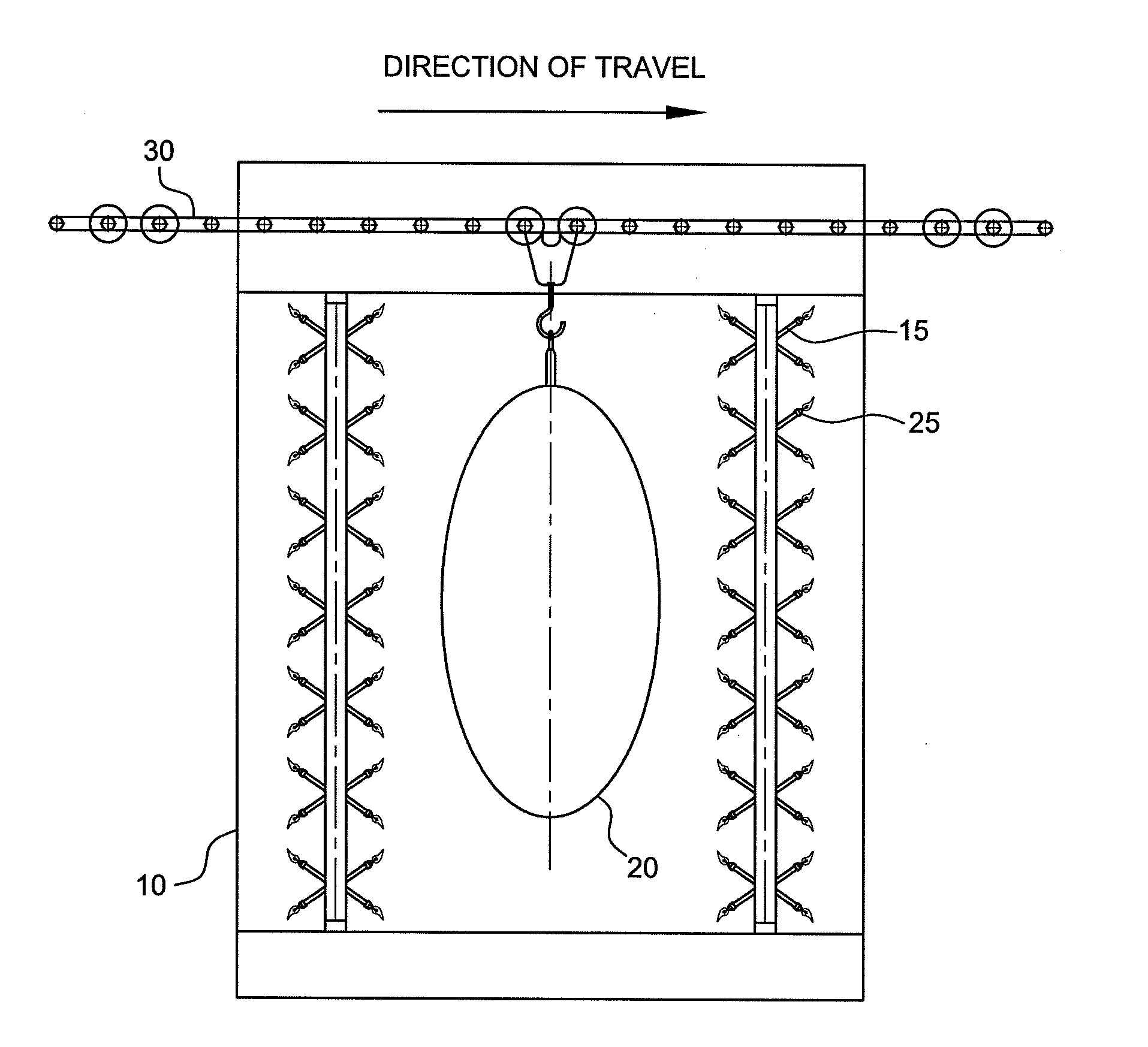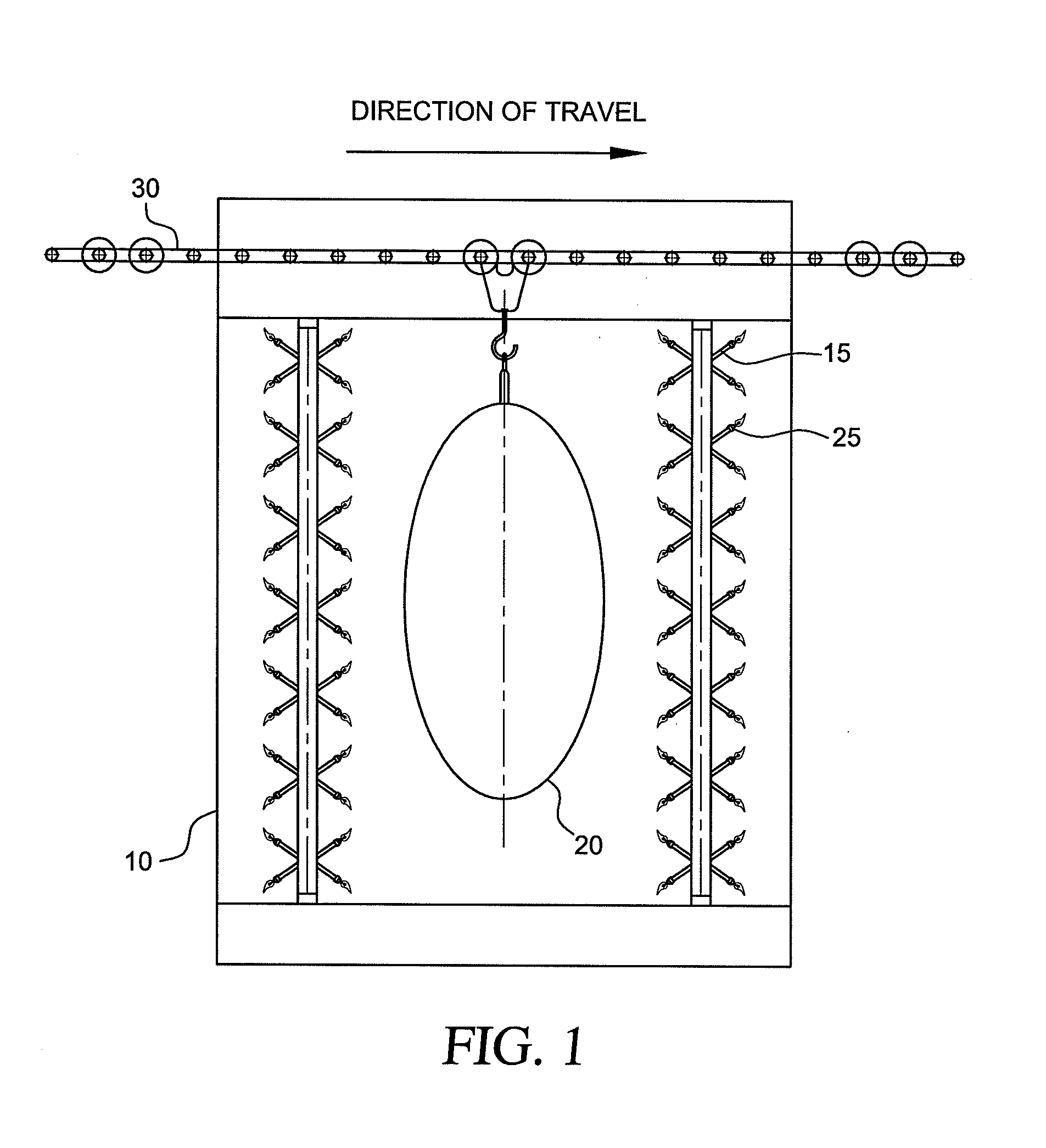Controlling Contamination on Carcasses Using Flame Decontamination
a technology of flame decontamination and carcass, which is applied in the field of controlling contamination on carcasses by flame decontamination, can solve the problems of foodborne disease outbreaks, contamination of carcasses, and carrying pathogenic bacteria, and achieve the effect of scalable and easily implemented into existing slaughter operations
- Summary
- Abstract
- Description
- Claims
- Application Information
AI Technical Summary
Benefits of technology
Problems solved by technology
Method used
Image
Examples
examples
[0023]A. Bacterial Culture Preparation
[0024]The following strains from the Kansas State University culture collection were used to prepare an inoculum:
[0025]Escherichia coli O157:H7: ATCC 43890 and ATCC 43889, obtained from Jackie Staats at KSU Veterinary School; USDA-FSIS 380-94, KSU 01, CDC (Patient outbreak), and KSU 03, CDC (Meat outbreak).
[0026]Salmonella spp.: Salmonella choleraesuis subsp. cholerasuis (S. enteriditis) (ATCC 4931, and USDA-FSIS 15060), S. seftenburg subsp. cholerasuis (ATCC 43485), S. newport (Dr. Phebus, KSU), and S. montevideo (Dr. L. Beuchat, UGA).
[0027]To prepare the inoculum, stock cultures were cultivated by placing one impregnated bead into a 5 ml solution of Difco® Tryptic Soy Broth (TSB) and incubating for 24 hours at 35° C. Next, a 0.05 ml loop of the respective culture was inoculated into a 10 ml solution of TSB and incubated for 24 h at 35° C. All five samples from each culture were mixed together to create a 50 ml cocktail containing 109 to 1010 C...
PUM
 Login to View More
Login to View More Abstract
Description
Claims
Application Information
 Login to View More
Login to View More - R&D
- Intellectual Property
- Life Sciences
- Materials
- Tech Scout
- Unparalleled Data Quality
- Higher Quality Content
- 60% Fewer Hallucinations
Browse by: Latest US Patents, China's latest patents, Technical Efficacy Thesaurus, Application Domain, Technology Topic, Popular Technical Reports.
© 2025 PatSnap. All rights reserved.Legal|Privacy policy|Modern Slavery Act Transparency Statement|Sitemap|About US| Contact US: help@patsnap.com


